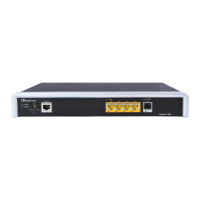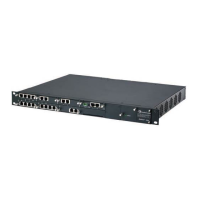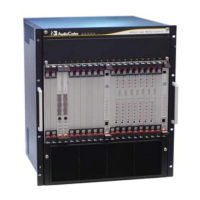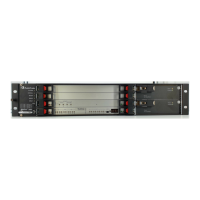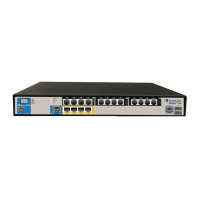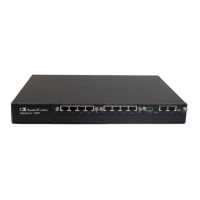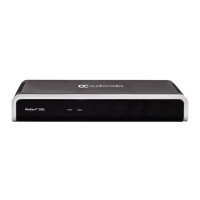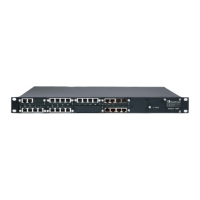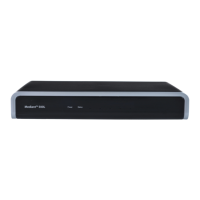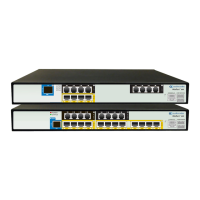User's Manual 316 Document #: LTRT-68822
Mediant 2000
Parameter Description
INVITE message is sent only to the IP Group (and not the defined IP
address).
If the destination is a User-type IP Group, the device searches for a
match between the Request-URI (of the received INVITE) to an AOR
registration record in the device's database. The INVITE is then sent to
the IP address of the registered contact.
If the parameter AlwaysUseRouteTable is set to 1 (see 'Configuring IP
Groups' on page 204), then the Request-URI host name in the INVITE
message is set to the value defined for the parameter 'Dest. IP Address'
(above); otherwise, if no IP address is defined, it is set to the value of the
parameter 'SIP Group Name' (defined in the IP Group table).
This parameter is used as the 'Serving IP Group' in the Account table for
acquiring authentication user/password for this call (see 'Configuring
Account Table' on page 215).
For defining Proxy Set ID's, see 'Configuring Proxy Sets Table' on page
209.
Dest SRD
[PREFIX_DestSRD]
Defines the SRD to where you want to route the call. The actual destination
is defined by the Proxy Set associated with the SRD. This allows you to
route the call to a specific SIP Media Realm and SIP Interface.
To configure SRD's, see Configuring SRD Table on page 201.
IP Profile ID
[PREFIX_ProfileId]
Assigns an IP Profile ID to this IP destination call. This allows you to assign
numerous configuration attributes (e.g., voice codes) per routing rule. To
configure IP Profiles, see 'Configuring IP Profiles' on page 235.
Status
Displays the connectivity status of the routing rule's IP destination. If there is
connectivity with the destination, this field displays "OK" and the device
uses this routing rule if required.
The routing rule is not used if any of the following is displayed:
"n/a" = The destination IP Group is unavailable
"No Connectivity" = No connection with the destination (no response to
the ping or SIP OPTIONS).
"QoS Low" = Poor Quality of Service (QoS) of the destination.
"DNS Error" = No DNS resolution. This status is applicable only when a
domain name is used (instead of an IP address).
"Unavailable" = The destination is unreachable due to networking issues.
Cost Group ID
[PREFIX_CostGrou
p]
Assigns a Cost Group with the routing rule for determining the cost of the
call. To configure Cost Groups, see 'Configuring Cost Groups' on page 196.
Forking Group
[PREFIX_ForkingGr
oup]
Defines a forking group ID for the routing rule. This enables forking of
incoming Tel calls to two or more IP destinations. The device sends
simultaneous INVITE messages and handles multiple SIP dialogs until one
of the calls is answered. When a call is answered, the other calls are
dropped.
If all matched routing rules belong to the same Forking Group number, the
device sends an INVITE to all the destinations belonging to this group and
according to the following logic:
If matched routing rules belong to different Forking Groups, the device
sends the call to the Forking Group of the first matched routing rule. If
the call cannot be established with any of the destinations associated
with this Forking Group and alternative routing is enabled, the device
forks the call to the Forking Group of the next matched routing rules as
long as the Forking Group is defined with a higher number than the
previous Forking Group. For example:
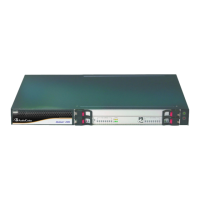
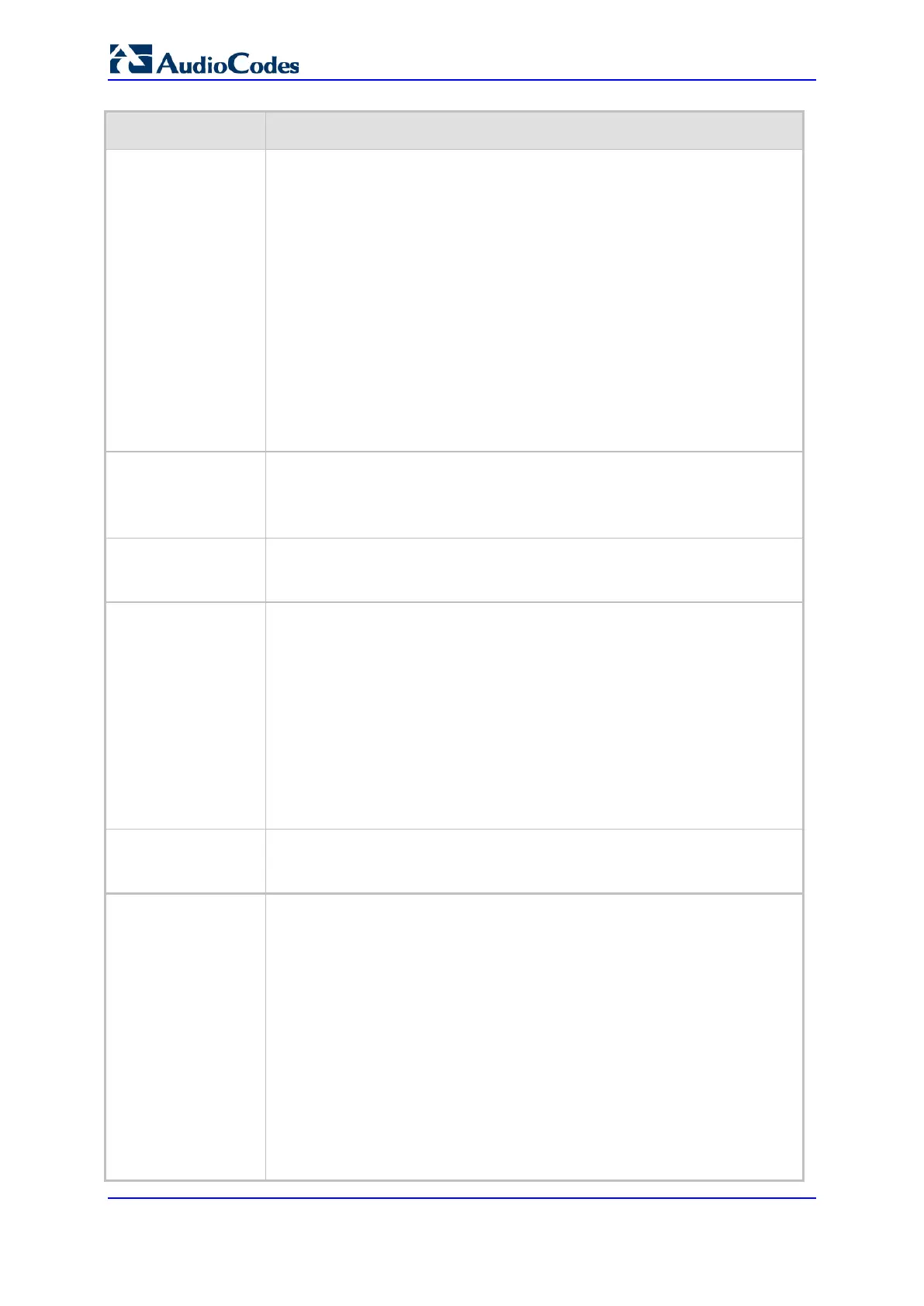